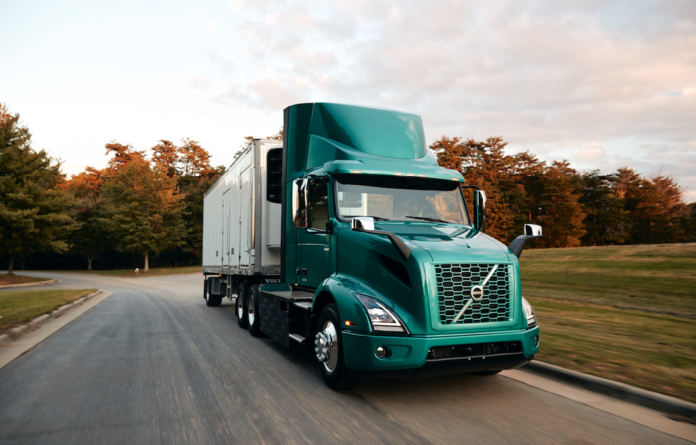Volvo Trucks North America says its zero-tailpipe-emissions VNR Electric model is now commercially available in North America.
The Volvo VNR Electric is designed for customer applications and driving cycles with local and regional distribution ranges. The 264 kWh lithium-ion batteries, which charge up to 80% within 70 minutes, have an operating range of up to 240 km based on the truck’s configuration.
“In launching the VNR Electric, we’re answering a very real need from fleet customers across North America – to not just deliver a road-tested, battery-electric truck, but to provide them with solutions for the entire life-cycle of the vehicle,” says Peter Voorhoeve, president of Volvo Trucks North America. “Before making the VNR Electric truck available to our customers, we thought through every aspect of electrification so they didn’t have to. We have worked alongside our fleet customers to plan beyond the vehicle and have developed an entire support system, ensuring this vehicle meets their needs day-in and day-out.”
Now commercially available, The Volvo VNR Electric plays a pivotal role in helping Volvo Trucks’ North American fleet customers meaningfully reduce emissions and achieve their ambitious sustainability goals, notes the company. Volvo Trucks is successfully facilitating the introduction of the Class 8 VNR Electric model to the North American market in part through strategic partnerships and participation in innovative demonstration projects.
With a goal to transform goods movement, the Volvo LIGHTS project united public and private stakeholders to design an end-to-end support system for the wide-scale electrification of commercial trucking. Alongside rigorous real-world fleet trials, the project created a robust dealership service model for sales and maintenance, developed best practices to implement reliable and cost-effective heavy-duty charging infrastructure, and launched next-generation training programs for technicians and first responders.
The project will continue to gather real-world operational data through 2021.




